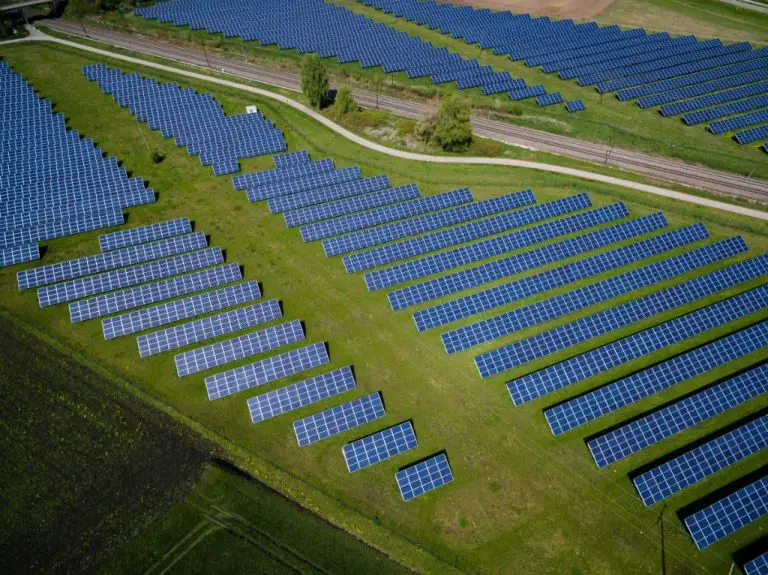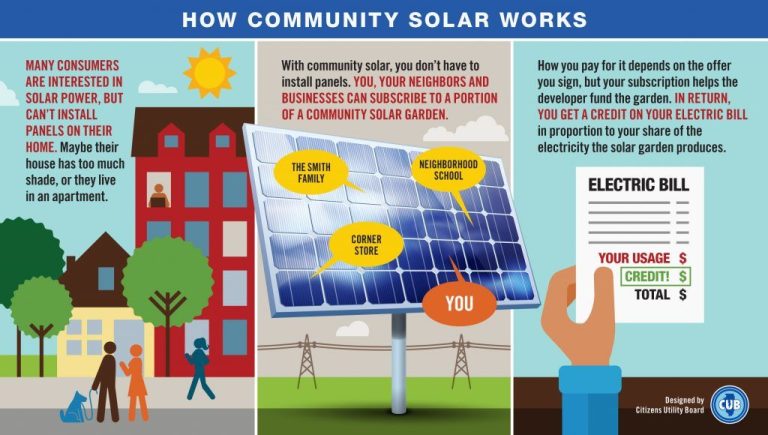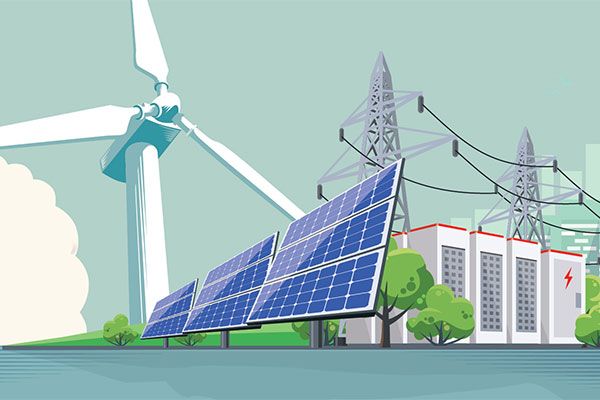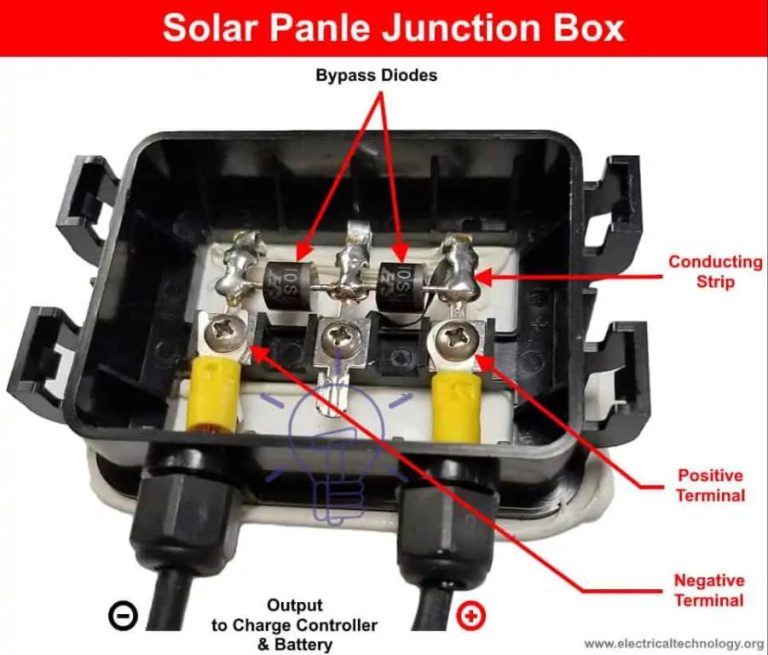How Much Solar Power Is Needed To Run An Average Home?
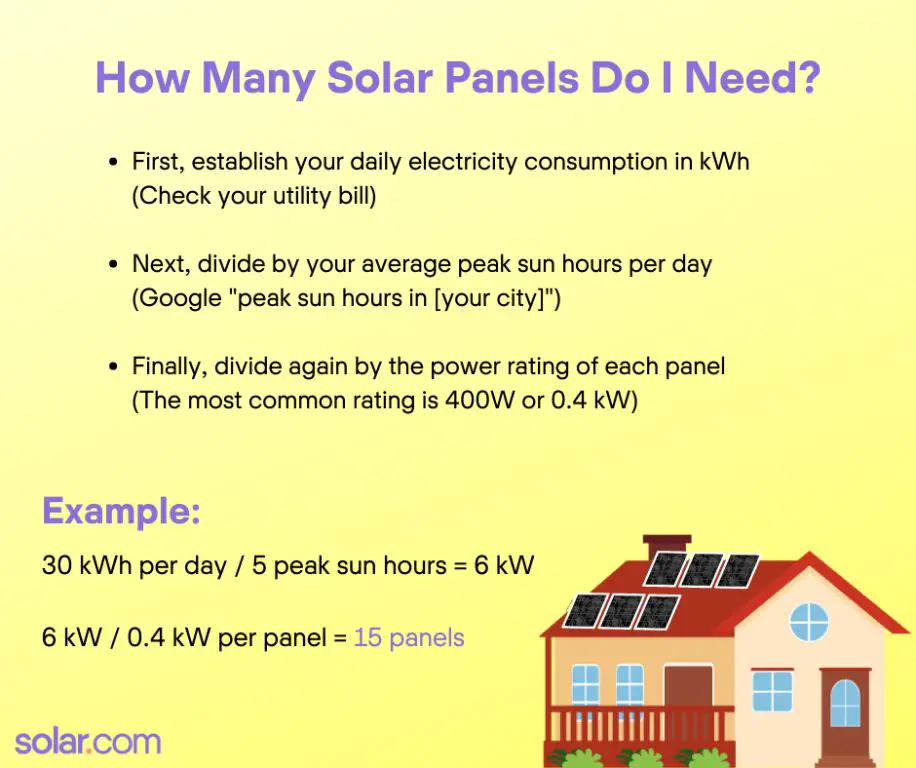
Solar power is the energy generated from sunlight using photovoltaic (PV) panels. Home solar systems convert sunlight into electricity to power household appliances and devices. Key factors that determine how much solar power is needed for a home include average electricity usage, solar panel system size, location, optimizing solar panel output, and energy storage capacity.
This article provides an overview of how much solar power is required to meet the energy demands of an average home. It examines the variables that influence solar system sizing and production capability. Understanding these factors allows homeowners to properly size their solar system for maximum efficiency and cost-effectiveness.
Average Home Electricity Usage
The average U.S. home consumes about 877 kWh of electricity per month. This can vary significantly based on the size of the home, number of residents, appliances used, and climate and location. Some key factors influencing home electricity use include:
- Appliances and lighting account for the majority of electricity use, around 35% for refrigeration and 15% for lighting. Other major uses are water heating (18%), HVAC (16%), electronics (12%), and cooking (4%).
- Larger homes with more residents consume more electricity. An average 2,500 square foot home with 4 people may use around 1,200 kWh per month.
- Homes in hotter climates use much more electricity for air conditioning in summer months. The average monthly usage in Florida is 1,155 kWh compared to 614 kWh in Maine.
Understanding the breakdown of electricity consumption in a home is important for identifying opportunities to increase efficiency and reduce waste (source 1, source 2). When designing a solar system, it’s critical to accurately estimate a home’s electricity needs.
Solar Panel Output
The amount of electricity that solar panels produce depends on several factors, most notably the wattage rating of the solar panels and the amount of sunlight they receive. Let’s break this down further:
Most residential solar panels today have power ratings between 250-400 watts. Higher wattage panels will produce more electricity. For example, a 250-watt solar panel in optimal conditions is capable of generating 250 watts of power at a given moment.
However, solar panels rarely operate at full capacity. The key metric is peak sunlight hours, which refers to the equivalent number of hours per day where solar irradiance is 1,000 W/m2. The average peak sunlight hours ranges from 3.5-6.5 across the continental United States [1]. This depends on location and local weather patterns.
Assuming 5 peak sunlight hours, a 250 watt solar panel in an ideal orientation would produce 1250 watt-hours (250 watts x 5 hours) of energy per day. A system with 10 of these panels would produce 12,500 watt-hours or 12.5 kilowatt-hours (kWh) per day.
The orientation and tilt of the solar panels also impacts production. South-facing panels tilted at an angle equal to the latitude receive the most sunlight. Production declines as orientation and tilt vary from the optimal angle.
Solar System Sizing
Properly sizing a solar system is crucial to meeting a home’s electricity needs. Here are the key steps to determine the right solar system size:
Calculate your home’s average daily electricity usage in kilowatt-hours (kWh) based on utility bills. This provides your daily load that the solar system must meet. According to Go Green Solar, dividing usage across recent bills by the number of days in the billing cycles gives a solid average.
Estimate the average peak sun hours for your location using solar maps. This determines how much sunlight strikes the panels. Southern regions typically see 4-6 peak hours while northern areas are in the 3-4 hour range. Unbound Solar provides sun hour maps.
Calculate the solar system size by dividing the daily load by peak sun hours. For example, 30 kWh of average daily usage divided by 5 sun hours equals a 6 kW system. Round up when sizing. More panels than precisely needed prevents shortages on low sunlight days.
Validate the system size by checking that the assumed sun hour production meets the load. In the example above, 6 kW multiplied by 5 sun hours produces 30 kWh, matching the daily usage.
Adjust for major appliances or electric vehicles, adding their average kWh needs to the basic load. Consider future load growth too. Right-sizing avoids having to expand the system later.
Proper solar sizing requires analyzing a specific home’s location, roof, and electricity habits. While rules of thumb help size initial estimates, professional load analysis provides the precision needed for an optimal system.
Location Impacts
The geographic location of a home significantly impacts how much solar power can be generated. This is because the amount of solar irradiation an area receives depends on its latitude and regional climate patterns. Areas closer to the equator tend to have greater solar potential as they receive more direct sunlight year-round. In contrast, higher latitude locations see less intense sunlight at wider angles, especially in winter.
Weather and average cloud cover also affect solar production. For example, the sunny, arid desert regions of the southwest United States average 5-7 kWh/m2/day solar irradiation. Comparatively, the Pacific Northwest which has more rainfall and overcast days only sees 3-4 kWh/m2/day. Thus, solar panels in Seattle will produce around 30% less energy than those in Phoenix, assuming all else being equal.
Local terrain can also impact solar potential. Areas surrounded by mountains may experience more shading which reduces the solar energy received throughout the day. Additionally, higher altitude locations receive more sunlight as there is less air mass and moisture to absorb photons. While microclimate impacts are secondary to latitude, they can still account for 10-20% differences in solar output.
Optimizing Solar Production
There are several strategies that can help optimize the energy output from solar panels. Proper orientation and tilt are critical factors. In the northern hemisphere, solar panels should face true south, while in the southern hemisphere, they should face true north. The optimal tilt angle equals the latitude of the installation location. For example, panels installed in Los Angeles, which is at 34° north latitude, should be tilted at 34°.
Tracking mounts allow solar panels to follow the sun’s path across the sky, helping maximize energy production. Single-axis trackers rotate the panels along one axis from east to west. Dual-axis trackers can move along two axes and align perfectly perpendicular to the sun’s rays at all times. Studies show trackers can increase energy output by 20-30% compared to fixed mounts (Linquip).
Monitoring systems can detect shading and optimize the panels’ angles in real-time to improve performance. Cleaning dust buildup and snow off solar panels regularly also helps maintain optimal output.
Energy Storage
Using batteries to store excess solar energy for use when needed is a key component of many home solar systems. Batteries act as energy storage units, allowing homeowners to capture surplus solar energy produced during sunny days and use it during nighttime or cloudy periods when solar production is lower. Adding battery storage also allows homes with solar to maintain power during grid outages. 1
There are a few main battery options for home solar systems, with lithium-ion being the most popular today. These batteries have higher capacity to store more energy in a smaller, lighter weight package compared to alternatives like lead-acid batteries. When sizing a home battery, factors like the solar system size, average energy usage, and desired backup capacity during outages all play a role. Many solar installers can help calculate optimal battery sizing for each home. 2
Adding battery storage does affect the upfront cost of a solar system. However, batteries allow homeowners to maximize self-consumption from their system and offer backup power reserves. For many homeowners, the benefits outweigh the costs over the long term.
Net Metering
Net metering allows homeowners with solar panels to send excess electricity back to the grid. This offsets electricity drawn from the grid when solar panels aren’t producing enough, such as at night. According to Solar Energy Blog, net metering agreements allow “customer power generation to be fed into the local power grid” so customers get credit for excess electricity produced1.
With net metering, solar system size doesn’t need to match a home’s exact energy use. Any extra solar energy produced flows back into the grid for a credit. Big Dog Solar explains that net metering “allows owners of small wind turbines and solar panels to claim benefits for any excess energy generated”2. This makes it easier to install solar panels even if they produce more than needed at times.
Depending on the net metering policy and local utility, credits for excess solar production may offset charges like monthly service fees. In some cases, utilities pay homeowners for extra production at the end of the year. Net metering makes solar power systems more affordable by reducing wasted production and increasing the value of solar energy sent to the grid.
Cost Considerations
The cost of a solar system for an average home can vary greatly depending on the size of the system, type of panels and inverters, location, incentives, and financing options. According to Solar Stack, the average cost for a 4kW solar system in Mexico ranges from $2.65 to $3.5 per watt or $10,600 to $14,000 total. In Maharashtra, India, costs also depend on the installer, but can be around Rs. 55,000 ($700 USD) per kWp according to Real Solar Online. In Australia, a 5kW system averages $6,500 to $9,500 AUD fully installed.
The payback period on a solar system in most regions is 4-8 years on average. This can be accelerated through rebates and tax credits. In Mexico, some locations offer net metering which allows excess solar energy to be sold back to the grid. In Maharashtra, subsidies through the government’s SURYA scheme can cover 30-50% of upfront costs. In Australia, Small-scale Technology Certificates (STCs) lower costs by up to $2,225 AUD. Solar loans and PPA financing spread out payments over time.
Overall, with incentives, financing, and rising electricity rates, solar can provide decades of free electricity for average homes and stable, predictable costs. Though upfront prices seem high, the long-term savings make solar a smart investment.
Conclusion
There are a few key factors that determine how much solar power is required to run an average home. The main considerations are the home’s electricity usage, solar panel system size, location and sun exposure, energy storage capacity, net metering agreements, and overall costs.
An average home uses around 900 kWh per month. Factoring in system inefficiencies and other losses, a 5 kW solar panel system can provide enough power for a typical household. Homes in sunnier climates will require fewer solar panels than cloudier regions. Battery storage allows excess solar energy to be used at night. Net metering gives homes credit for electricity fed back into the grid. Ultimately the ideal solar system size depends on the home’s needs and budget.
In summary, solar power can fully run an average home with the right system design and location. Understanding electricity usage, solar panel output, and key factors like climate and storage is important for properly sizing a home solar system.

